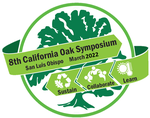#28

Carbon Sequestration in California Oak Woodlands
Virginia Matzek; Santa Clara University, Department of Environmental Studies and Sciences, 500 El Camino Real, Santa Clara, CA 95053; 408 551 6006; vmatzek@scu.edu
Restoring degraded oak woodlands, and preserving those that are now threatened by suburban development, could be a part of California's greenhouse gas (GHG) emissions reductions strategy, if the habitat's carbon storage potential was sufficiently well understood. To aid in this effort, I compiled a database of 3,352 forest inventory plots and used it to parameterize growth models and understand drivers of biomass for eight types of California oak woodland. Plot data came from both published and unpublished sources and were originally recorded for various purposes, but all plots had in common a complete census of woody stems dentified to species and measured for their diameter at breast height. Diameters were converted to biomass and then to carbon measurements using allometric equations. The Von Bertalanffy growth equation was fitted to biomass estimates for woodland types using the subset of 1132 plots for which stand age was known or estimated. Look-up tables were produced from live and standing dead biomass curves, as well as estimates of forest floor, understory, and soil carbon modeled according to methodologies approved by the California Air Resources Board. Latitude, longitude, slope, aspect, and elevation were used to predict the average carbon stock in representative habitats of each oak woodland type.
